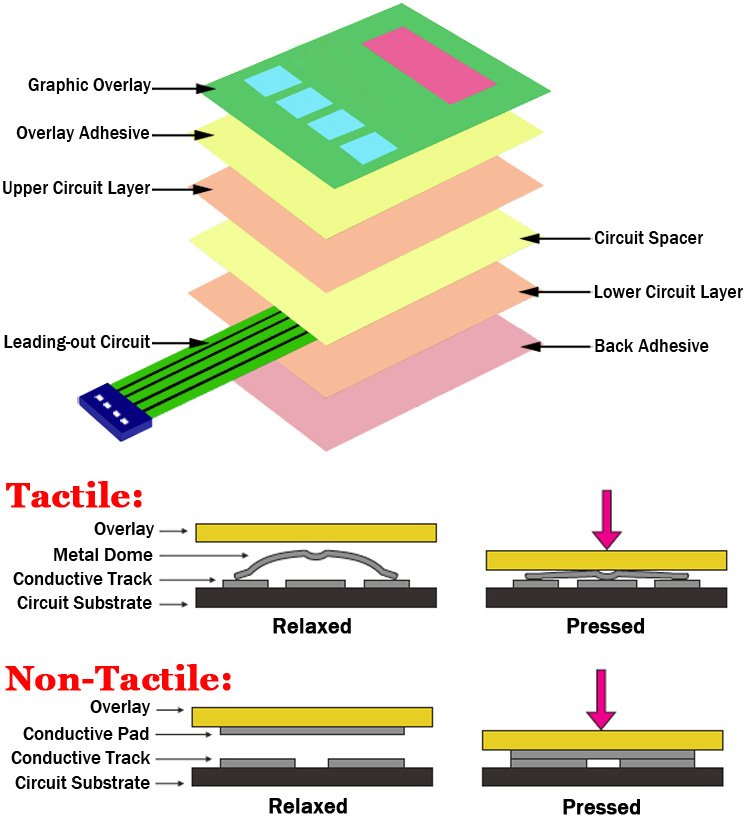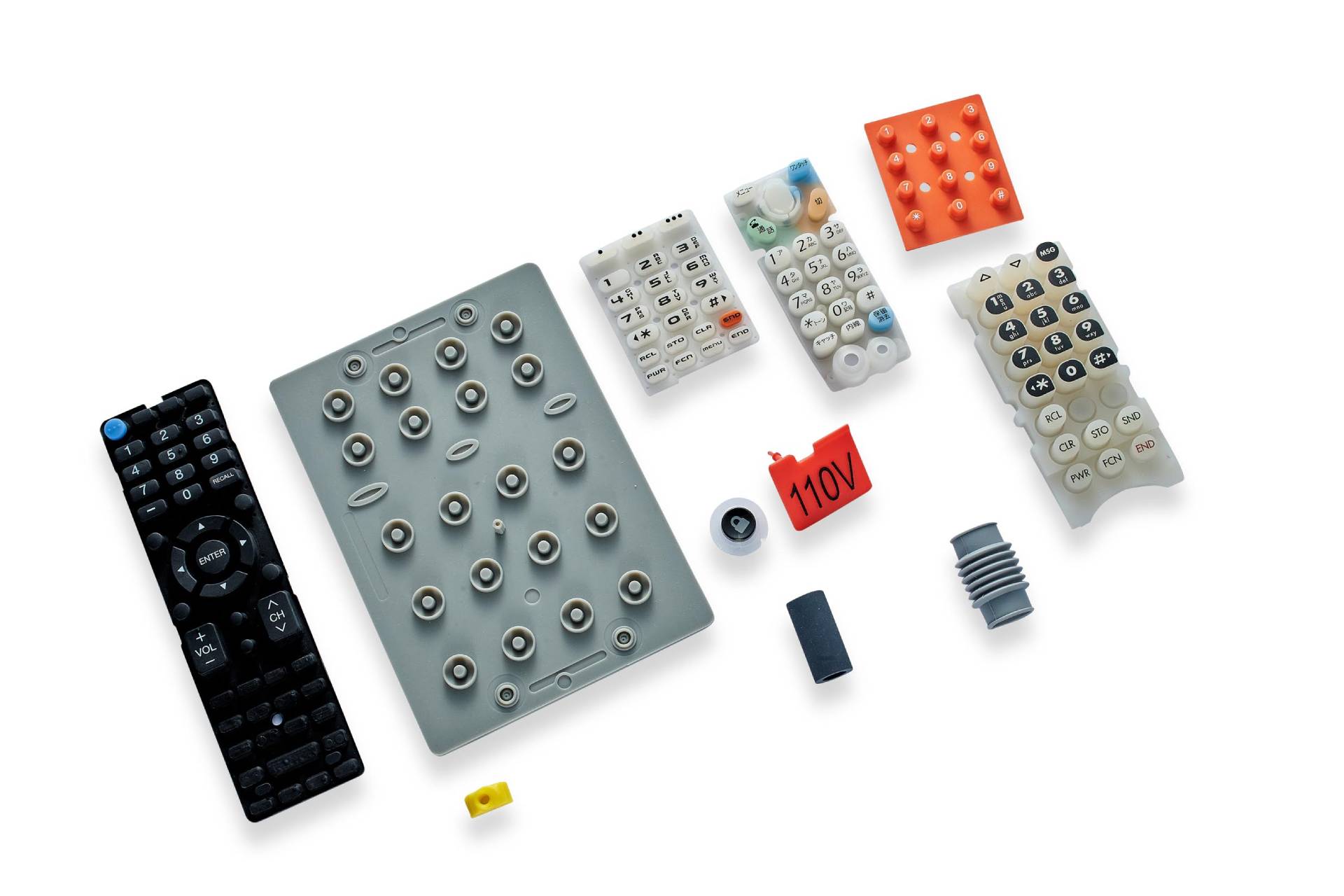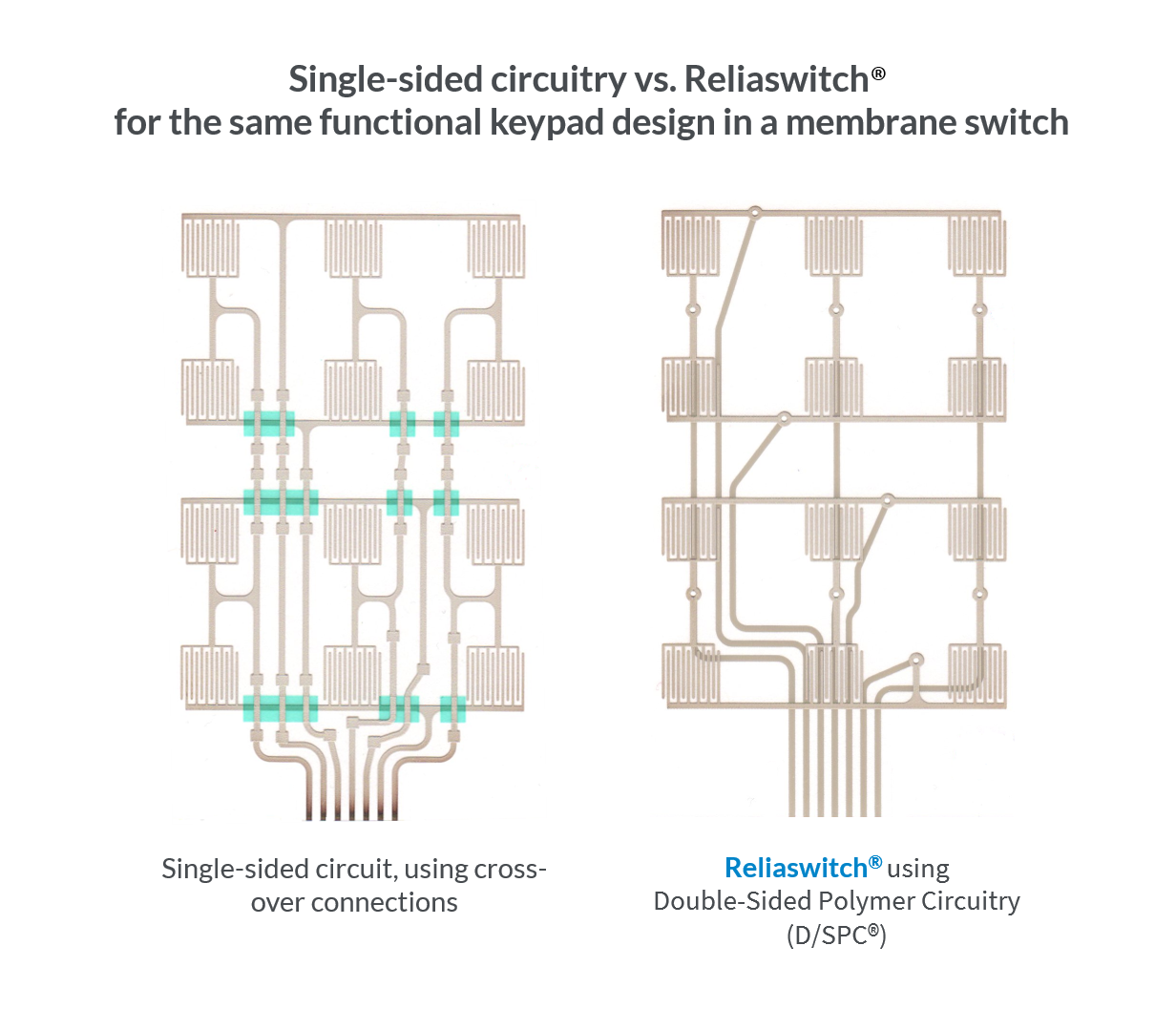Skilled Membrane Switch Manufacturer for Complex Projects
Exploring the Manufacturing Refine of Membrane Switch for Different Industries
The production process of Membrane buttons is a complicated undertaking that requires accuracy and focus to detail. From picking proper materials to carrying out extensive quality assurance procedures, each step plays a vital function in making certain capability. Various industries, consisting of clinical and automobile, depend on these elements for their one-of-a-kind applications. Comprehending the complexities of this process reveals significant insights right into how these switches are generated and their impact throughout diverse sectors.
Comprehending Membrane Switches Over: A Review

Key Products Utilized in Membrane Switch Production
In Membrane switch production, the choice of essential materials considerably affects capability and sturdiness. Conductive materials, adhesives, and coatings play vital functions, while substratum option impacts general efficiency and integrity. Recognizing these components is important for maximizing the layout and production of Membrane switches.
Conductive Products Summary
Conductive products play a crucial role in the functionality of Membrane switches, ensuring reputable electrical links within the tool. Generally utilized materials include silver, copper, and carbon-based inks, each offering distinct advantages. Silver is favored for its high conductivity and sturdiness, making it perfect for applications requiring durable efficiency. Copper, while somewhat less conductive than silver, is an economical alternative commonly used in published circuits. Carbon-based inks give a versatile choice, ideal for applications where flexibility and reduced costs are focused on, although they have actually lower conductivity contrasted to steel options. The selection of conductive products straight impacts the general integrity, lifespan, and performance of the Membrane switch, making it a crucial consideration in the production process.
Adhesives and Coatings
Finishes and adhesives are crucial parts in the manufacturing of Membrane buttons, giving vital bonding and safety residential or commercial properties. These products guarantee that different layers of the switch, consisting of graphic overlays and circuitry, stick firmly to one an additional, enhancing longevity and capability. Generally utilized adhesives consist of pressure-sensitive adhesives (PSAs) and epoxy-based formulations, which supply solid attachment and durability. Coatings, such as polyurethane or acrylic, serve to shield versus ecological variables, including moisture, abrasion, and chemicals. Furthermore, coverings can boost tactile responses and aesthetic allure, contributing to the total individual experience. The choice of appropriate adhesives and coatings is crucial for enhancing efficiency and longevity in diverse applications across numerous markets, making certain that Membrane switches fulfill particular operational demands.
Substratum Option Aspects
Substrate option plays a necessary role in the manufacturing of Membrane switches, as it considerably influences their general performance and durability. Secret products such as polyester, polycarbonate, and adaptable published circuit boards (FPCBs) are typically made use of for their distinct residential properties. Polyester is preferred for its cost-effectiveness and resistance to abrasion, making it ideal for applications with high wear. Polycarbonate offers remarkable clarity and effect resistance, suitable for environments requiring high visibility. FPCBs give improved adaptability and are frequently made use of in complicated styles. The choice of substrate likewise influences variables like thermal stability, chemical resistance, and convenience of printing. Eventually, selecting the proper substratum is critical for making certain the capability and longevity of Membrane changes throughout various sectors.
The Design Refine of Membrane Switches Over
The style process of Membrane switches is an essential phase that greatly affects the performance and appearances of the end product - membrane switch manufacturer. It begins with specifying the details requirements of the application, consisting of measurements, switch layout, and responsive comments choices. Designers should take into consideration individual communication, making sure that the switch is user-friendly and accessible.Next, materials are selected based on toughness, flexibility, and ecological resistance. The assimilation of graphics and branding components is additionally crucial, as it boosts visual charm and interaction. Prototyping permits iterative screening, allowing adjustments based upon customer responses and performance evaluations.Additionally, the design should account for the electrical elements, such as circuits and why not check here ports, ensuring integrity and ease of use. Ultimately, an effective style harmonizes capability, visual appeals, and user experience, leading the way for effective manufacturing and click here now lasting efficiency in numerous markets
Printing Methods for Membrane Changes
The printing techniques utilized in Membrane button production play an important duty in establishing the final product's quality and functionality. Screen printing supplies benefits such as sturdiness and lively color application, while electronic printing advancements supply adaptability and accuracy in style. Recognizing these approaches can greatly impact the overall efficiency of Membrane switches in numerous applications.
Screen Printing Benefits
Various advantages make display publishing a preferred technique for generating Membrane buttons. This approach permits top notch, lively shades and detailed designs, which are essential for interface applications. Display printing is especially efficient for applying thick ink layers, improving longevity and tactile feedback. Additionally, it supplies superb attachment to various substratums, ensuring long life popular atmospheres. The procedure is affordable for big production runs, as it minimizes setup time and waste. In addition, screen printing supports a variety of inks, consisting of specialized and UV-curable options, allowing convenience in style. Its capacity to produce regular results across multiple devices makes it a reputable option for manufacturers going for high quality and performance in Membrane switch manufacturing.
Digital Printing Innovations

Improvements in digital printing innovation are changing the manufacturing of Membrane switches, supplying manufacturers cutting-edge remedies that improve design versatility and efficiency. Digital printing enables intricate styles and high-resolution graphics, allowing custom-made branding and functionality without the limitations of traditional methods. This method reduces arrangement times and expenses, facilitating much shorter manufacturing runs and minimal waste, making it ideal for businesses with varying demands. Additionally, innovations in ink formulations supply far better toughness and attachment, making sure long life in various environments. As industries increasingly seek complex and tailored designs, digital printing stands apart as an important technique, establishing a brand-new requirement in Membrane button manufacturing. The assimilation of these advancements settings producers to fulfill developing market needs effectively.
Setting up and Layering of Membrane Switch Components
Mindful assembly and layering of Membrane switch components are necessary to guaranteeing functionality and toughness. This process starts with the exact alignment of different layers, including the graphic overlay, adhesive, circuit layer, and backing product. Each element has to be meticulously positioned to maintain electric integrity and user interface responsiveness.During assembly, conductive traces are related to the go right here circuit layer, usually made from products like polyester or polycarbonate. This layer is vital, as it sends signals when stress is applied. The glue utilized for bonding these layers is additionally chosen for its ability to endure environmental stress and anxieties while preserving a safe bond.Heat and pressure are frequently used throughout the setting up procedure to identify that the layers adhere effectively without endangering the capability of the button. Ultimately, interest is offered to the side securing to protect against moisture and contaminants, protecting the durability of the Membrane switch in different commercial applications.
High Quality Control Procedures in Membrane Switch Manufacturing
Quality control procedures play a necessary function in making sure the reliability and performance of Membrane changes adhering to the setting up and layering of their parts. In the manufacturing procedure, numerous key examinations are carried out to promote top quality criteria. These include aesthetic inspections for defects in printing and sticky application, along with useful examinations to confirm the responsiveness of each switch.Additionally, environmental screening is performed to evaluate the buttons' durability against temperature level fluctuations and humidity direct exposure. Makers usually implement analytical procedure control (copyright) methods to keep an eye on manufacturing consistency, making it possible for early detection of anomalies.Furthermore, traceability systems are established to track parts and products, making sure accountability and assisting in recalls if required. Calibration of tools and adherence to sector requirements are also crucial to keeping item stability. Collectively, these quality assurance measures secure the performance of Membrane switches throughout different applications, ultimately enhancing client complete satisfaction.
Applications of Membrane Switches Across Different Industries
Membrane buttons are made use of across a diverse variety of industries, showcasing their flexibility and versatility. In the medical field, they give water-proof and trustworthy interfaces for gadgets such as diagnostic devices and infusion pumps, making certain hygiene and ease of usage. The automobile sector utilizes Membrane buttons for control panel controls, allowing smooth communication between the vehicle driver and lorry systems.In consumer electronics, these switches are located in appliances and handheld devices, offering a streamlined, modern-day aesthetic while enhancing performance. Industrial applications additionally leverage Membrane switches for equipment control board, where sturdiness and resistance to severe problems are essential.Furthermore, the aerospace and protection industries utilize Membrane buttons for cockpit instrumentation and communication systems, focusing on reliability and performance under severe problems. On the whole, Membrane switches play a crucial function in enhancing the user experience and operational performance across various domains.
Frequently Asked Inquiries
For how long Does It Require To Manufacture a Membrane Layer Switch?
The production time for a membrane layer switch commonly varies from a couple of days to several weeks - membrane switch manufacturer. Elements influencing this period consist of design complexity, product accessibility, and manufacturing quantity, all affecting the total timeline substantially
What Is the Typical Life Expectancy of a Membrane Switch?
The typical life-span of a membrane switch usually ranges from 1 to 5 million actuations, depending upon factors such as material high quality, ecological conditions, and usage regularity, substantially influencing sturdiness and overall performance.
Can Membrane Switches Be Customized for Specific Applications?
Membrane buttons can undoubtedly be customized for details applications. Their design flexibility enables modifications in size, shape, colors, and graphics, ensuring compatibility with special needs across different industries and enhancing performance and user experience.

Are Membrane Changes Eco-friendly?
The ecological impact of Membrane changes differs. Some materials used might not be environment-friendly, while innovations in making processes are increasingly concentrating on sustainability, intending to minimize waste and advertise recyclable parts in their production.
What Are the Common Failure Modes of Membrane Switches?
Usual failure settings of Membrane switches consist of delamination, adhesive failing, wear and tear from use, moisture access, and electric failures. These problems can substantially affect performance, efficiency, and life-span in various applications across different markets. Membrane buttons can be tailored to fit details layout requirements, such as dimension, form, and functionality, making them very adaptable.The building and construction normally includes numerous layers, including a graphic overlay, adhesive, and a circuit layer, which function with each other to develop a smooth user experience. In Membrane switch production, the option of essential products considerably affects functionality and longevity. The auto industry utilizes Membrane switches for dashboard controls, making it possible for seamless communication between the chauffeur and vehicle systems.In consumer electronic devices, these switches are found in appliances and handheld devices, offering a streamlined, modern aesthetic while enhancing capability. Industrial applications additionally take advantage of Membrane switches over for equipment control panels, where durability and resistance to rough problems are essential.Furthermore, the aerospace and defense fields use Membrane buttons for cabin instrumentation and interaction systems, focusing on integrity and efficiency under severe problems. Membrane buttons can undoubtedly be tailored for specific applications.